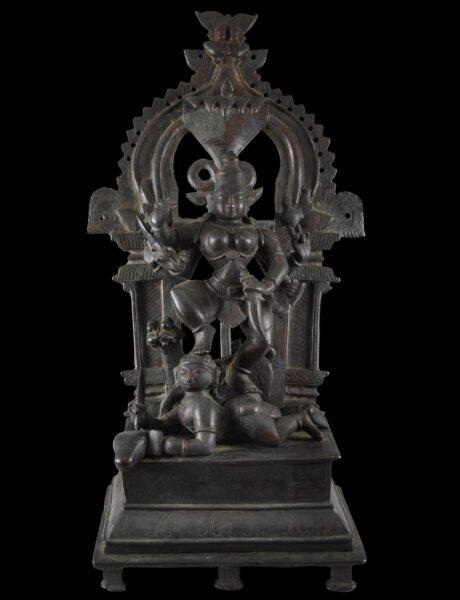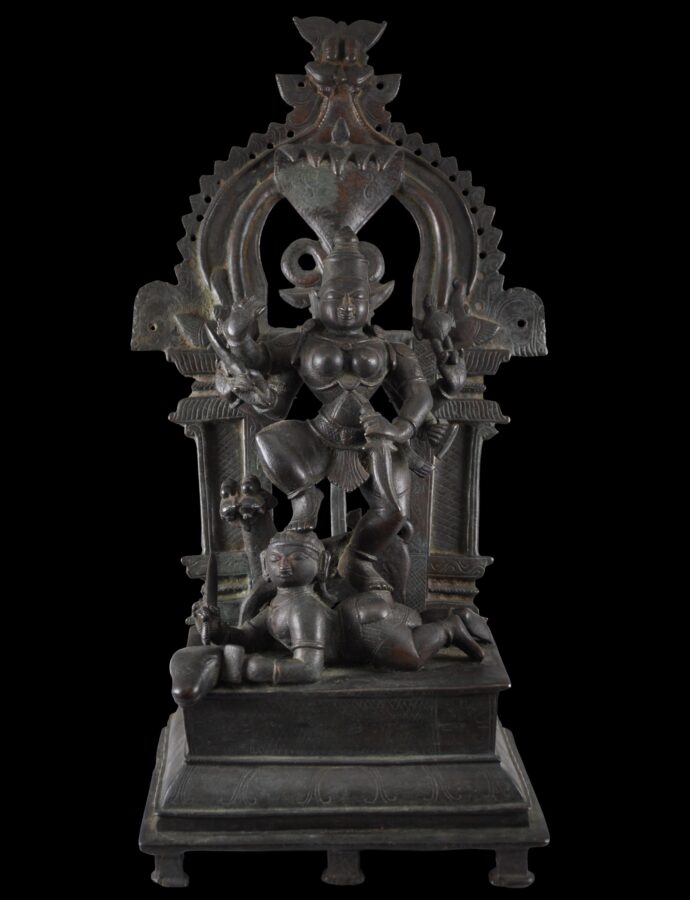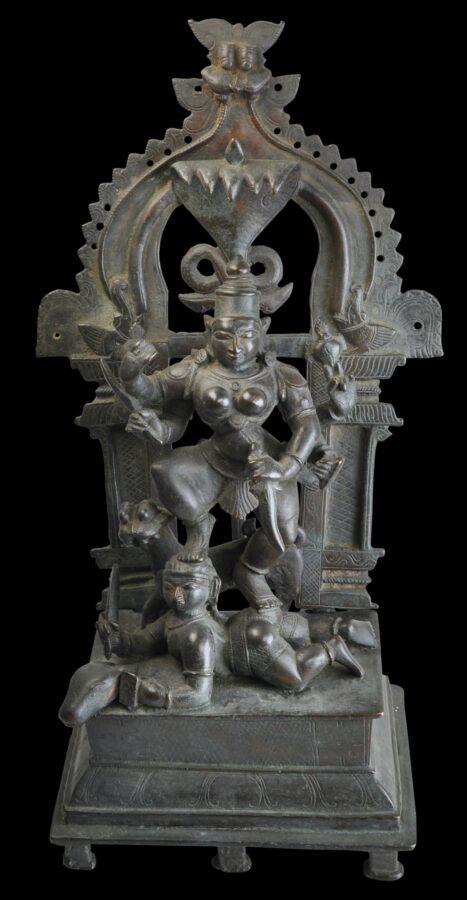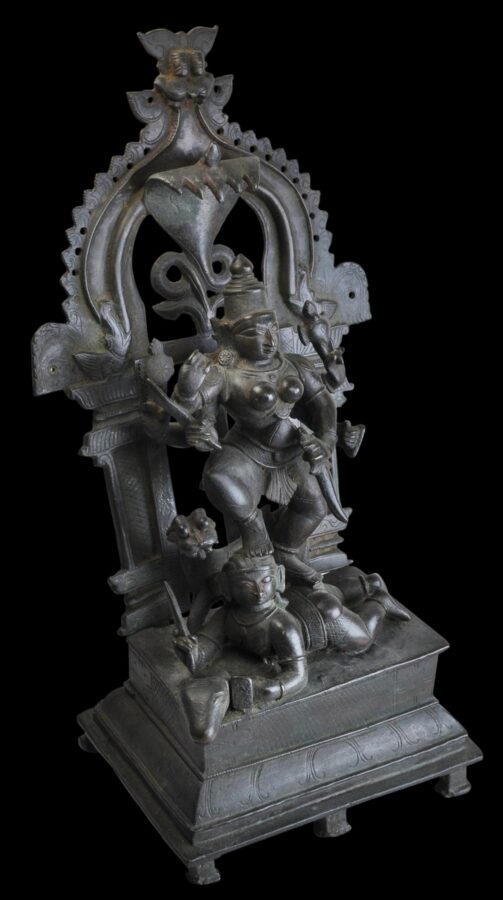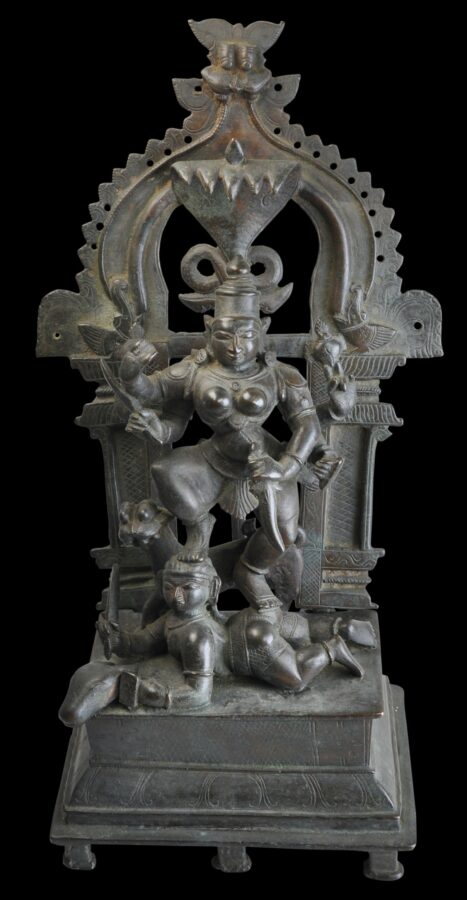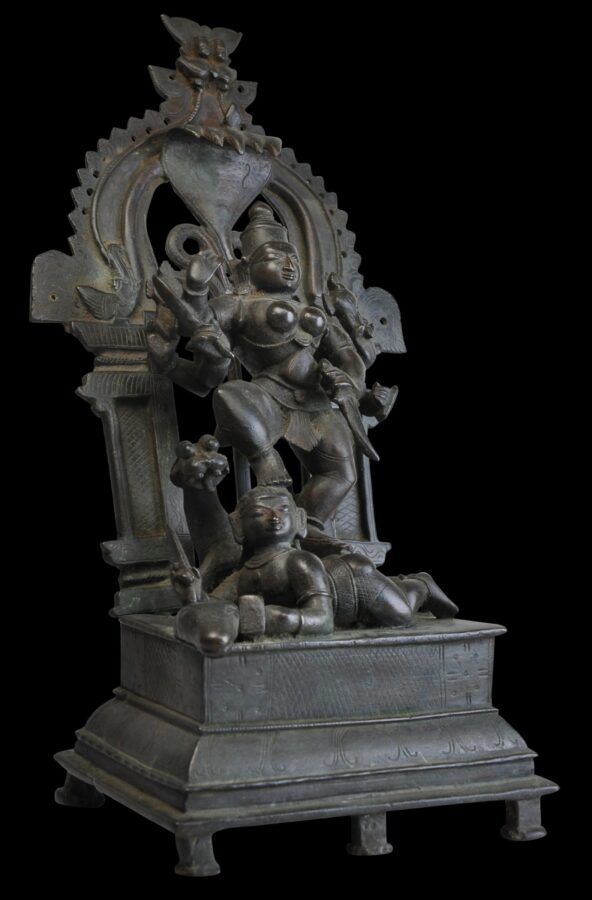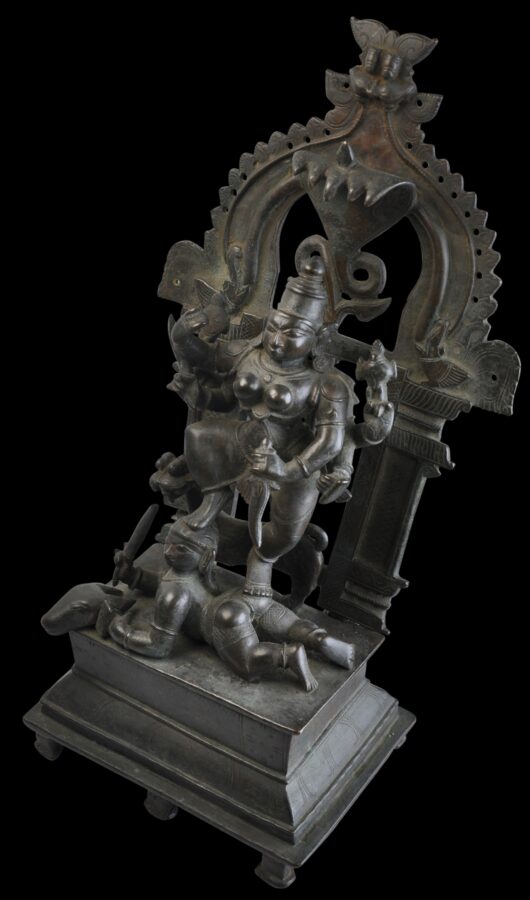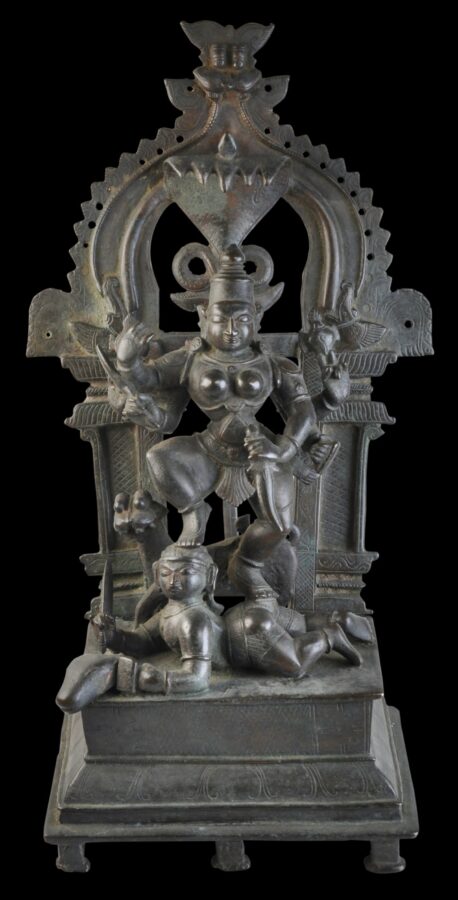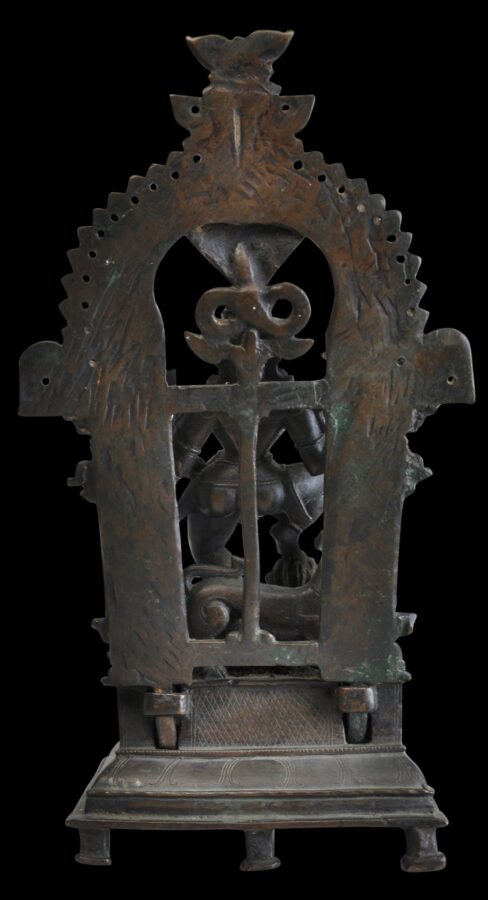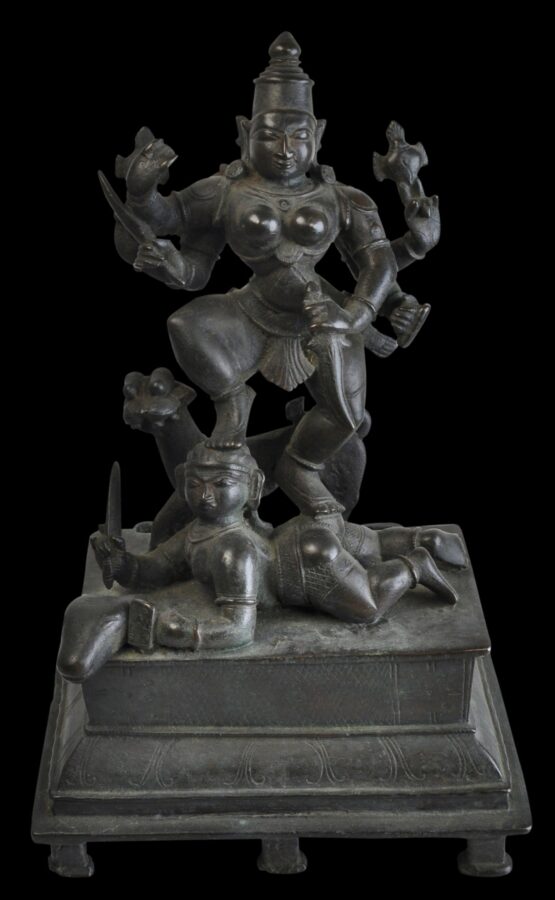This dynamic rendering of a six-armed Durga shows the goddess in the process of vanquishing the buffalo-demon Mahishasura. The buffalo’s decapitated head sits on the right front corner of the base, and Mahishasura, who had taken the form of a buffalo to trick Durga, lays prostrate with Durga’s right foot on his head and Durga’s left foot on his right buttock.
Durga’s lion mount with its bulging eyes stands behind the goddess with his head appearing near Durga’s right knee.
Durga wears a tall, conical headdress, and holds a dagger, a knife, a small shield, a conch (shanka) and a cakra wheel. One hand is left without an attribute – probably this was intended to hold a trident.
Mahishasura continues to wield a sword and a small shield.
A separately cast backing plate or aureole rises above the group. It has a kurtimukha mask at its top, a five-headed hooded cobra at its middle which rears protectively over Durga, and small makara on each side.
The group is arrayed on a raised, tiered, rectangular platform which stands on six short feet.
Goddess worship harks back to the earliest era of Hinduism, and Durga, is a manifestation of Devi, the great goddess, though the popularity of goddess worship declined in many areas from around the 17th century onwards when it was supplanted by Vaishnavism with is increasingly popular male deities of Rama and especially Krishna.
The bronze is in excellent condition. The casting and composition is dynamic and highly sculptural.
References
Dursum, B., et al, Change and Continuity: Folk and Tribal Art of India, Lowe Art Museum, University of Miami, 2004.
Mitchell, A.G., Hindu Gods and Goddesses, UBSPD, 1982.
Weber, J., et al, Sur la Routes des Indes: Un Ingenieur Francais dans le Tamil Nadu, Somogy Editions d’Art, 2013.


